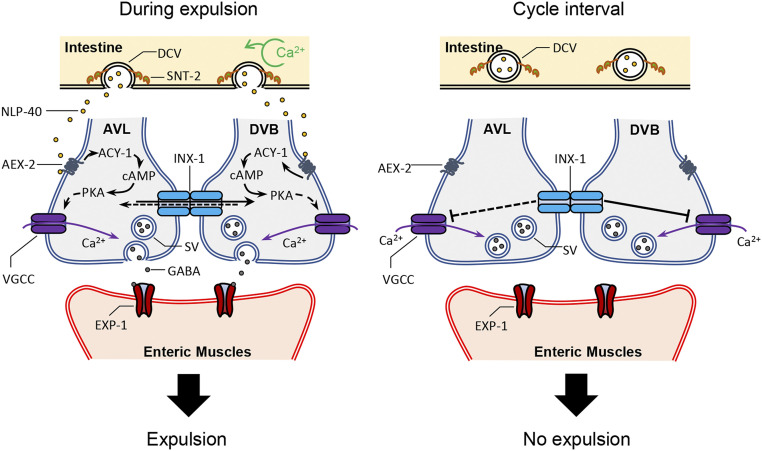Fig. 7.
Working model for INX-1 in the expulsion step of the DMP. (Left) During the defecation cycle, calcium oscillation occurs in the intestine around every 50 s. SNT-2 on the DCVs senses the calcium and leads to NLP-40 release from the intestine. NLP-40 activates its receptor, AEX-2, which leads activation of ACY-1 to generate cAMP. Increased cAMP activates PKA, which results in calcium influx to GABAergic motor neurons (AVL and DVB), triggering GABA release. The released GABA activates its receptor, EXP-1, which leads to contraction of enteric muscles (Exp). During NLP-40–induced signaling, INX-1 promotes calcium influx in one neuron in response to activation of the other neuron, leading to synchronized GABA release from both NMJs. (Right) During cycle intervals, INX-1 suppresses ectopic activation of the motor neurons by inhibiting ectopic calcium transients. INX-1 sharpens NMJ output by mediating lateral excitation in the presence of signal and shunting inhibition in between cycles when signal is low. Dotted lines are experimentally not shown.

